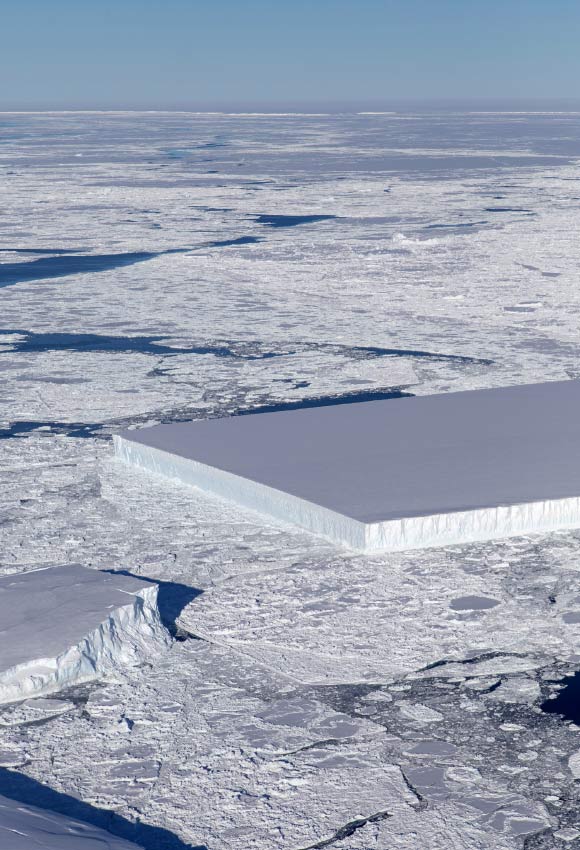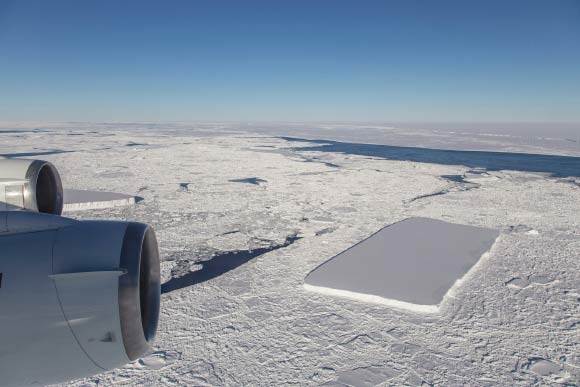Members of the Operation IceBridge, NASA’s decade-long airborne survey of polar ice, spotted two rectangular icebergs during a flight over the northern Antarctic Peninsula on October 16, 2018. The icebergs’ sharp angles and flat surface indicate that they probably recently calved from the ice shelf.

This image of the rectangular iceberg was taken during an Operation IceBridge flight over the northern Antarctic Peninsula on October 16, 2018. Image credit: Jeremy Harbeck, NASA.
During the survey, designed to assess changes in the ice height of several glaciers draining into the Larsen A, B and C embayments, IceBridge scientist Jeremy Harbeck spotted a very sharp-angled, tabular iceberg floating among sea ice just off of the Larsen C ice shelf.
“I thought it was pretty interesting,” Dr. Harbeck said.
“I often see icebergs with relatively straight edges, but I’ve not really seen one before with two corners at such right angles like this one had.”

Just past the rectangular iceberg, which is visible from behind the outboard engine, IceBridge saw another relatively rectangular iceberg. Image credit: Jeremy Harbeck, NASA.
The rectangular iceberg appeared to be freshly calved from Larsen C, which in July 2017 released the mammoth A-68 ‘ice island,’ a chunk of ice about the size of the state of Delaware.
In the second photo, Dr. Harbeck captured both the edge of the rectangular iceberg, and a slightly less rectangular iceberg.
That image also captures the massive A68 iceberg in the distance.
“I was actually more interested in capturing the Delaware-sized A68 iceberg that we were about to fly over, but I thought this rectangular iceberg was visually interesting and fairly photogenic, so on a lark, I just took a couple photos,” Dr. Harbeck said.
The flight originated from Punta Arenas, Chile, as part of a five-week-long IceBridge deployment, which began October 10 and is scheduled to conclude November 18.







